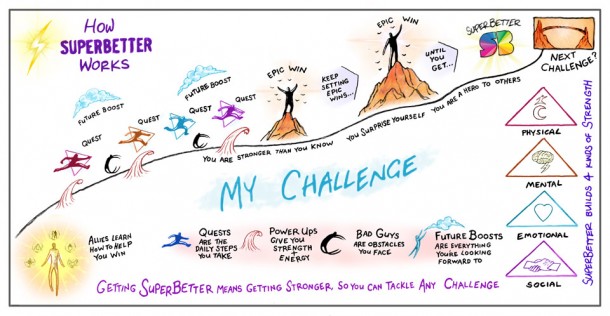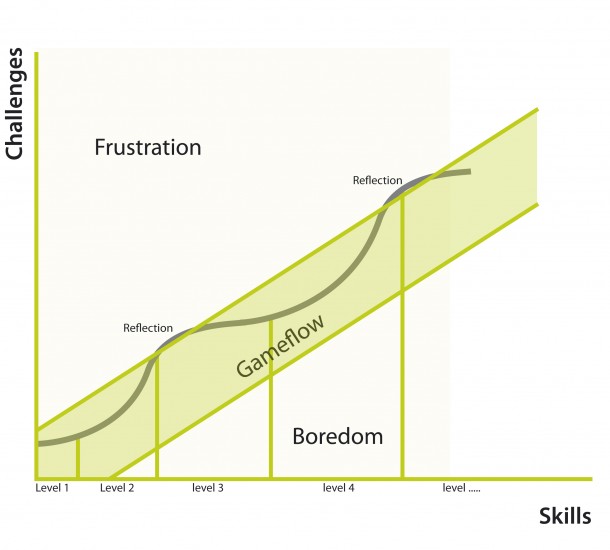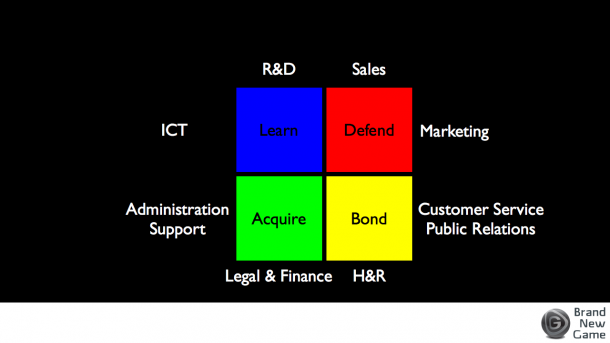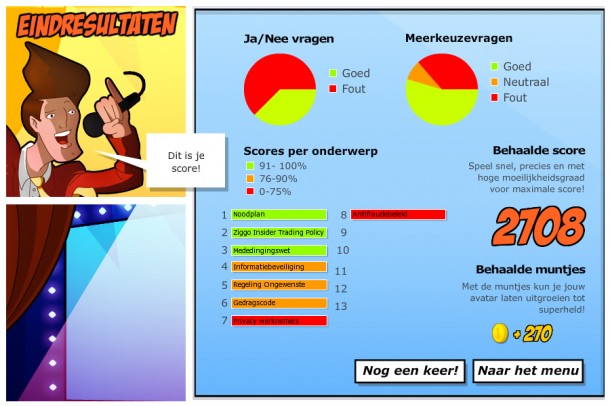When I mention the topics of applied games, serious gaming and gamification, they are often greeted with scepticism. And for good reason; video games have had a very tumultuous history.
By Luis Ramos
Ever since their inception, critics have associated video games with a number of negative consequences, like aggression, addiction and social isolation. In spite of this, the industry has thrived and grown into a $70.4 billion industry in 2013. This number is expected to top $86.1 billion by 2016 1. It is still the fastest growing entertainment sector, and with the advent of mobile gaming, the number of users exceeds that of any other form of entertainment. This makes video games as much a part of our modern lives as any other medium.
Yet, the mention of video games in a serious capacity is still met with many concerns. They are games after all, aren’t they? How could playing games possibly help us reach any organizational goals? Luckily, we can use the science of psychology to finds some answers.
For this article, I’ve chosen to home in on the topic of employee training. Also met with much resistance within the workplace, employee training is a vital tool for developing employee skills, fostering cooperation and increasing overall organizational adaptability. However employees, as well as managers, tend to react negatively to training, often labeling at as boring, unnecessary and a distraction from their ‘real’ work. This lack of engagement can seriously undermine the motivation of the employees, which in turn impacts the effectiveness of any training program being implemented.
If one were to pair the above mentioned with any possible scepticism on the use of video games as a training tool, they would surely conclude that it would be doomed to fail. However, one of the most important characteristics of any game is their ability to fully engage the player. By demanding the use of multiple senses, and providing a challenge that is just difficult enough to exceed the players skill level, games create a ‘flow’-experience: a temporary state in which a person feels detached from their surroundings and becomes completely engrossed by the task at hand. It is a state associated with performance at every level in many different disciplines.
Another reason video games can be so engaging is their ability to motivate the player. Here are some things video games do really well in order to motivate players to keep playing:
Visual representations of progress
A game will show you how far along you are and how much more you need to go. You are never left to guess if you are making any progress.
Multiple long-, mid- and short-term goals
Games are great at breaking up challenges into smaller goals. This is already apparent in the classical level structure that most games use.
Reward effort
A game often rewards the players for every action he or she undertakes. Whether it’s smashing some bricks with a jump or successfully dropping puzzle piece, the action is rewarded in one way or the other.
Rapid, frequent, consistent and clear feedback
Games tend to provide quick feedback for everything you do, enabling you to rapidly gage the effectiveness of your actions. Feedback ranges from small pinging sounds when you jump or grab an item, to on screen flashes that you are receiving damage and are in danger.
This is just a sampling of what games can do to influence and motivate peoples behavior. This ability to influence and motivate peoples behavior is what makes video games such a powerful training tool. Each of the above aspects can be expanded upon by further researching scientific literature on the relevant subjects, but we’ll leave that for another time.
So, now we have an idea of how it could work. But a more important question remains: Does it actually work?
Industrial and Organizational psychologists Traci Sitzmann and Katherine Ely set out to answer this very same question2. In their 2010 article, they compiled 55 reports that researched the effectiveness of training games, dubbed ‘simulation games’ in their article, and compared the results of these reports through statistical analysis.
What they found is that self-efficacy (the strength of one’s belief in one’s own ability to complete tasks and reach goals) was 20% higher for trainees receiving instruction via a simulation game than trainees in a comparison group. They also found that, on average, trainees receiving instruction via a simulation game had 11% higher declarative knowledge levels, 14% higher procedural knowledge levels, and 9% higher retention levels than trainees in the comparison group. This means that trainees receiving instruction via a simulation game were found to know more of what was taught, more of how to perform a task or action and remembered it better after an extended period of time. In addition to the above, another important find was that training games worked best when they were part of a training program. This allowed for post-play feedback session that improved results in all learning categories. For a more extensive report on the investigation, be sure to consult the article.
For an example of a successful application of serious gaming, we need look no further than the “Hot Talent” Game; a game we at BrandNewGame developed for one of the leading telecom retailers in the Netherlands. Check out the game here: http://www.brandnewgame.com/bizz/projects/belcompanys-hot-talent/
The company approached us with the objective of wanting to improve the understanding and application of the principles of cross- and upselling by their sales personnel. They had already developed a training program for the same purpose, but found they wanted to increase the amount that employees interacted with and applied the knowledge provided through training. The game placed the player in a store environment, where their task was to greet and engage customers in conversation, wherein they tried to discover a customers consumer profile. For instance: are you dealing with a casual consumer who doesn’t have a lot of product knowledge, or is the customer a gadget freak, who wants state of the art and is up to speed on the latest developments. When the customer profile was identified, the player had the task to match the right tone of voice to the profile, increasing the trust the customer had in the player. Doing this correctly resulted in the ability to make a better sale.
The results were impressive. A total of 680 employees played the game for an average of 40 times within the first 8 weeks after the game was deployed. Some employees even played the game 200 times! The game significantly increased the voluntary interactions the employees had with the training material, which in turn resulted in an increase of sales.
Research in the field of psychology keeps providing us with positive evidence for use of serious games for training. By combining the knowledge privy to us from the field of science with that of the field of game design, the possible results are realistic and significant. Furthermore, gaming provides us with a tool to convey knowledge and vision in a playful, dynamic and challenging way. On top of everything else, it can help relieve the stigma of training in the workplace, by changing the way we all look at training. Those who dare to challenge conventions will be able to reap the benefits of gaming as a training tool. Playing games just got a whole lot more interesting!
Posted in Research, Serious game | No Comments »














